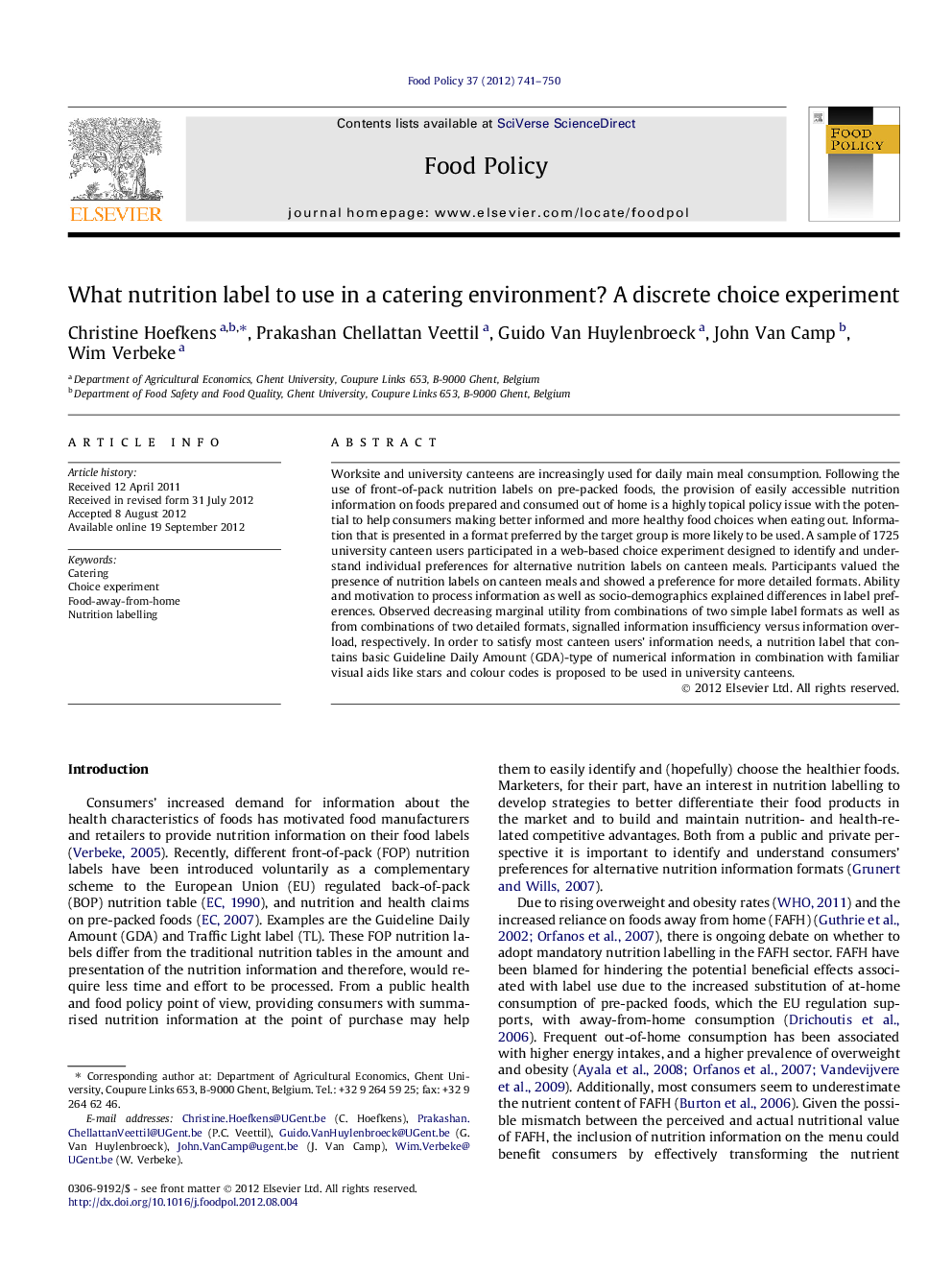| Article ID | Journal | Published Year | Pages | File Type |
|---|---|---|---|---|
| 5070793 | Food Policy | 2012 | 10 Pages |
Worksite and university canteens are increasingly used for daily main meal consumption. Following the use of front-of-pack nutrition labels on pre-packed foods, the provision of easily accessible nutrition information on foods prepared and consumed out of home is a highly topical policy issue with the potential to help consumers making better informed and more healthy food choices when eating out. Information that is presented in a format preferred by the target group is more likely to be used. A sample of 1725 university canteen users participated in a web-based choice experiment designed to identify and understand individual preferences for alternative nutrition labels on canteen meals. Participants valued the presence of nutrition labels on canteen meals and showed a preference for more detailed formats. Ability and motivation to process information as well as socio-demographics explained differences in label preferences. Observed decreasing marginal utility from combinations of two simple label formats as well as from combinations of two detailed formats, signalled information insufficiency versus information overload, respectively. In order to satisfy most canteen users' information needs, a nutrition label that contains basic Guideline Daily Amount (GDA)-type of numerical information in combination with familiar visual aids like stars and colour codes is proposed to be used in university canteens.
⺠Consumers value the presence of nutrition labels on canteen meals. ⺠Detailed nutrition labelling formats are preferred. ⺠Basic GDA-type of information combined with interpretational visual aids proposed. ⺠Signals of information insufficiency and information overload are observed. ⺠Ability and motivation to process information influence label preferences.
